NIL
Mark Patton
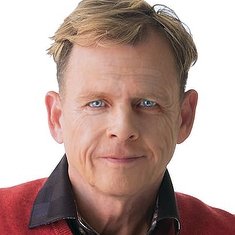

Overview:
Gaucho chief must wear many hats in recruiting and training next season’s group of Gauchos
Joe Pasternack is amid Finals Week, although there’s no real finality to his work as the UC Santa Barbara men’s basketball coach.
One season merely turns to the next in the blink of a shooting eye.
“It’s constant,” he told Noozhawk.
He just held his final spring workouts, sent his Gauchos to their final exams for the spring quarter, and then headed to Oklahoma City for Monday’s Game Five of the NBA Finals.
Pasternack has two dogs in Monday’s championship fight, which is tied at two games apiece in the best-of-seven series: the Ajay Mitchell of the Oklahoma City Thunder and T.J. McConnell of the Indiana Pacers.
Mitchell was his point guard at UCSB for three seasons. McConnell played the same position for Arizona a decade ago when Pasternack served on the Wildcats’ staff.
The ever-changing landscape of college basketball has made the Gaucho coach feel like he’s “now the owner of an NBA team.”
The NCAA transfer portal and player payouts for NIL (name, image and likeness) have created a free-market free-for-all.
“You’re the general manager and you’re the fund raiser,” Pasternack said. “I have to raise every penny, recruit the kids, coach them, and manage the expectations of people.
“It’s a 180-degree change in the job title from when I came here eight years ago.”
But if it sounds like a complaint, be assured that it’s not.
Pasternack’s success in finding donors to remodel the Thunderdome proved that he was built for this kind of competition.
“I love the chase, so I love it,” he said. “These are the rules now, and in business you have to adjust and go after it.
“Some have had to change their personality to deal with it, but I feel like the luckiest man in the world.
“I get to live in Santa Barbara and do this.”
Springing Forward
Watching the NBA Finals gives him a brief respite after a busy spring of recruiting and training.
“The guys are going home after finals, and then we’ll have eight weeks of summer workouts starting July 7,” Pasternack said. “They’re going to be open to the public.”
He’s excited to showcase what’s new in this latest reboot.
Four NCAA Division I transfers have been added to a freshman class that features 6-foot-6 Luke Zuffelato from Santa Barbara High School; C.J. Shaw from in Mojave High School in Las Vegas and 6-8 Michael Simcoe from Phoenix’s Sandra Day O’Connor High.
They’ll join six returning scholarship players — a coup in itself, considering the transactional nature of college sports these days.
They include junior guard Jason Fontenet II, junior forwards Colin Smith and Koat Keat Tong; senior center Evans Kipruto, and sophomore guards Zion Sensley and Zachiah “ZZ” Clark.
“I think we have the most returners of anybody in our league,” Pasternack said. “Retaining players was first and foremost our No. 1 priority when the season ended.”
They all hit the court running during the postseason workouts.
“It was one of the best springs we’ve had,” Pasternack said. “Colin Smith played healthy in only 18 of last year’s 31 games, but he was awesome this spring.
“He’s really changed his body and was fully healthy the entire time.
“And KK (Koat Keat Tong) made a huge amount of progress this spring.

“It was the first spring he’s ever practiced basketball with us, when you really think about it, because he’s always had to deal with a knee injury.”
Pasternack took nothing for granted, however, in restocking his roster.
Injuries knocked his team down a few pegs after its NCAA tournament seasons of 2021 and 2023. The Gauchos finished seventh in the Big West Conference in 2024 and fifth last season.
“Ajay wasn’t able to practice one day during his last season here, and it had a domino effect on us,” he said.
“Injuries have derailed us the last two years and we just want to make sure that we have enough depth of experience.”
He’s taking full advantage of the NCAA’s new scholarship limit, which has been expanded to 15 from 13.
Fantastic Four
The four players that he’s plucked from the transfer portal are all Division I veterans: senior guard Aidan Mahaney from the University of Connecticut, junior guards Miro Little from Utah and Marvin McGhee IV from Cal State Bakersfield, and senior center Hosana Kitenge from the University of Louisiana.
“I’m really excited about these guards, and the big kid worked out with our guys and looked unbelievable,” Pasternack gushed. “It’s exciting to think of these guys playing with our returning players, like Jason Fontenet.
“Our two returning freshmen, Zion and ZZ, are looking really good, too.”
Mahaney went for the gold ring after entering last year’s transfer portal by signing with UConn, the two-time defending NCAA champion.
The 6-foot-3 guard had averaged nearly 14 points per game as both a freshman and sophomore at Saint Mary’s to earn All-West Coast Conference first team honors both seasons.

“He can really score the ball and he has an incredible amount of confidence,” Pasternack said. “We didn’t recruit him out of high school because he was set on Saint Mary’s for a long time, but we saw him a ton.
“He obviously had a great two years there and was then one of the hottest commodities in the portal.
“He visited Kentucky and UConn, which was coming off its two national titles, and he chose UConn.”
But Mahaney envisions the NBA as his final destination. He figured his playing time with the Huskies of 12.3 minutes per game last season wasn’t helping him get there.
“It is what I need to do,” he said of his transfer to UCSB, former home of current NBA players Mitchell, Gabe Vincent of the Los Angeles Lakers and Miles Norris of the Boston Celtics.
And Cole Anderson, whose 47.4% shooting from the three-point line last season broke James Powell’s Gaucho record of 46.7% (2007-2008), was invited to work out with the Lakers last week.
Finnish Product
Little, a member of Finland’s senior national team since age 17, is making UCSB his third college after having played one season at Baylor and another at Utah.
He led the Utes last season with 96 assists but decided to transfer after they fired head coach Craig Smith.
“Miro is big, he’s strong and he’s versatile,” Pasternack said. “He also has a lot of international basketball experience, just like Ajay had with Belgium.
“I recruited (Utah Jazz star) Lauri Markkanen to Arizona, and he’s playing with Miro this summer on Finland’s national team.
“Miro talked to Lauri, and I think that really helped in our recruitment of him. He wanted to make sure this next stop was his last stop.”
His father, La Trice Little, has both played and officiated professional basketball in Finland. His mother, Kati Packalén, serves as the CEO of the Basketball Association of Finland.

“Miro comes from a real big basketball family,” Pasternack said. “Our goal in this recruiting class was to find high-character guys that No. 1, care about getting a degree from UCSB, and No. 2, care about team.
“We wanted to find two-way players who can play offense and defense and are driven to compete for a championship … Guys who are really hungry because of the situation they’ve come from.
“That’s how we’ve been successful in the past, and Miro fits that.”
McGhee showed his long-distance marksmanship against the Gauchos on Jan. 9, making 3-of-5 three-pointers while scoring 11 points in Bakersfield’s 78-66 defeat at the Thunderdome.
He shot 47.1% from three (40-for-85) for the season.
“We needed some outside shooting, and he gives us that,” Pasternack said. “But he’s also 6-foot-6 with a 6-foot-10 wingspan and incredible upside.
“He’s a two-way player who can shoot, score, defend and rebound.
“We feel like he’s a versatile player who can play three different positions, and that gives us a lot of flexibility.”
He plans to play a three-guard, two-forward offense next year.
“All these guys can come off ball screens,” Pasternack said.
Center Attraction
Kitenge, a powerfully built, 6-foot-8 senior, figures to be an anchor to that offense.
He received All-Sun Belt Conference honors after averaging 13.7 points and 7.6 rebounds per game for Louisiana during the 2023-2024 season. He missed all of last year with a torn Achilles tendon.
“It was a similar injury to Colin Smith’s, except he did it in October — two months earlier in the year than Colin,” Pasternack said. “He had a physical and practiced with us this spring.
“He’s gone from 275 pounds to 242, which is pretty incredible, and his attention to detail has been excellent.”
Even before the injury, former Louisiana coach Bob Marlin said Kitenge “improved from start to finish as much as any player I’ve coached.”
His versatility fits the mold of the recruits that UCSB pursued this offseason.

“He’s got an incredible motor defensively, can shoot threes, score in the post, drive the ball and he can really pass it, too,” Pasternack said. “But what I like most about him is how hard he plays.
“On top of everything, he talks on the court. He’s such a great young man.”
Kitenge wasn’t the only newcomer who worked out with the Gauchos this spring. Shaw graduated early from Mojave High so he could enroll at UCSB for the spring quarter.
“He’s been here and able to practice with the team,” Pasternack said. “It’s been great having guys like Jason Fontenet and Colin Smith, the leaders of our team, teaching him the ropes and giving him such a huge head start.”
Developing talent, he noted, can be more important than having it transfer to you.
“Basketball is a game of habit,” Pasternack said. “Everyone plays a different offense and a different defense, and it’s not easy for a transfer to learn a new habit.
“We didn’t want to have to teach 14 whole new players.”
He plans to mix and match when it all starts again in three weeks.
NIL
Joel Klatt can’t stand NIL re-signing announcements

Joel Klatt has had it with college football’s latest social media phenomenon.
In the wake of USC quarterback Jayden Maiava’s re-signing announcement, racking up nearly five million impressions on X, Fox’s lead college football analyst didn’t hold back his frustration with what’s become a growing trend across the sport.
Jayden Maiava has re-signed with the USC Trojans. pic.twitter.com/jLI0S6hPKh
— USC Football ✌️ (@uscfb) December 16, 2025
“I can’t with the re-signing of players, I’m sorry,” Klatt said.
“I can’t with the re-signing of players, I’m sorry.”@joelklatt shares his thoughts on the issues in college football, specifically surrounding “re-signing” and player representation. Do you agree? pic.twitter.com/lCFw3FfMUW
— FOX College Football (@CFBONFOX) December 17, 2025
USC’s social media account posted Maiava’s re-signing announcement on Dec. 16, followed by a flurry of similar posts for other Trojans players. Tobias Raymond, Chasen Johnson, Romero Ison, Jahkeem Stewart, and Kendarius Reddick all got the graphic treatment announcing they were staying with the program.
Tobias Raymond has re-signed with the USC Trojans. pic.twitter.com/OYAWhIup4Y
— USC Football ✌️ (@uscfb) December 17, 2025
Chasen Johnson has re-signed with the USC Trojans. pic.twitter.com/J56Jb7ZpD9
— USC Football ✌️ (@uscfb) December 17, 2025
Romero Ison has re-signed with the USC Trojans. pic.twitter.com/pA11LlvOAx
— USC Football ✌️ (@uscfb) December 17, 2025
Jahkeem Stewart has re-signed with the USC Trojans. pic.twitter.com/nr76iwVxRj
— USC Football ✌️ (@uscfb) December 17, 2025
Kendarius Reddick has re-signed with the USC Trojans. pic.twitter.com/dc88qAVLsu
— USC Football ✌️ (@uscfb) December 17, 2025
But for Klatt, these announcements feel fundamentally different from how free agency works in professional sports.
“I started seeing some of these announcements on social media, guys would text me these announcements, and this is going to sound like I’m picking on guys,” Klatt said. “This is not their fault, but like Malik Washington, Waymond Jordan, LaNorris Sellers, there’s all these stories about like, ‘Oh, they’re re-signing. They’re working on a deal to stay.’ And I’m like, I don’t want to hear that. I don’t want to see it. You mean, wait, was he about to leave?”
Joel Klatt isn’t blaming the players. But in the NFL, fans know when a guy is a free agent and can walk. So when he re-signs, it makes sense. In college, a player is already on the team, already getting NIL money, and then announces he’s re-signing? It just makes fans wonder what they missed.
“This is so different than in the National Football League when your favorite team has a player that you love that you know is a free agent, and then they re-sign him, and you’re like, ‘Nice!’” Klatt contiuned. “That feels a lot different than like I’m a fan of a college team and I just think that this player who’s committed to this school, who’s at this school, who has more eligibility left, and is making a large sum of money through NIL, and then all of a sudden he’s like, ‘I’m re-signing.’ It’s like, ‘I didn’t know you thought about leaving.’”
But Klatt’s real issue isn’t the social media pageantry. It’s what’s happening behind the scenes.
“I don’t think that this is good for players, either, I really don’t. And let me tell you why: these contracts can be binding, and they can be loose, but it all depends on how they’re negotiated because there’s not a formality to the process,” Klatt explained. “So, the schools can kind of do whatever they want to do. They’re making their own rules, and then there’s some representation out there that is representing college players, and they want to play by their own rules.”
The lack of regulation in college athlete representation is a real problem. Unlike NFL players who are represented by NFLPA-certified agents, college athletes can hire essentially anyone to negotiate their NIL deals. There’s no registration requirement, no oversight, no baseline standard.
And according to Klatt, some of these representatives have no idea what they’re doing.
“And some of the representatives, by the way, are not very sophisticated. Guess why? Because they’re not representing a client that’s part of an association or a union, so they don’t have to register,” he added. “So the players can hire whomever. It can be like Uncle Eddie. We don’t know who these representatives are. That’s not to say that all of them are bad, but there are some that certainly don’t know what they’re doing. So, there are players because of that, that are signing contracts that they don’t even really know what they’re signing.”
Despite all his complaints about NIL representation and re-signing announcements, Joel Klatt still believes in college football.
“I remain very optimistic about our sport,” Klatt said. “I really do. I think college football’s in a great spot. I think that it can get better, but that doesn’t mean I’m blind to the problems.”
But his optimism won’t stop the re-signing trend. Schools will keep celebrating players who decide to stay, and fans will keep wondering if they were ever really thinking about leaving. It’s just part of college football now.
NIL
Texas Tech Linked to $2.4 Million College Football Transfer Quarterback
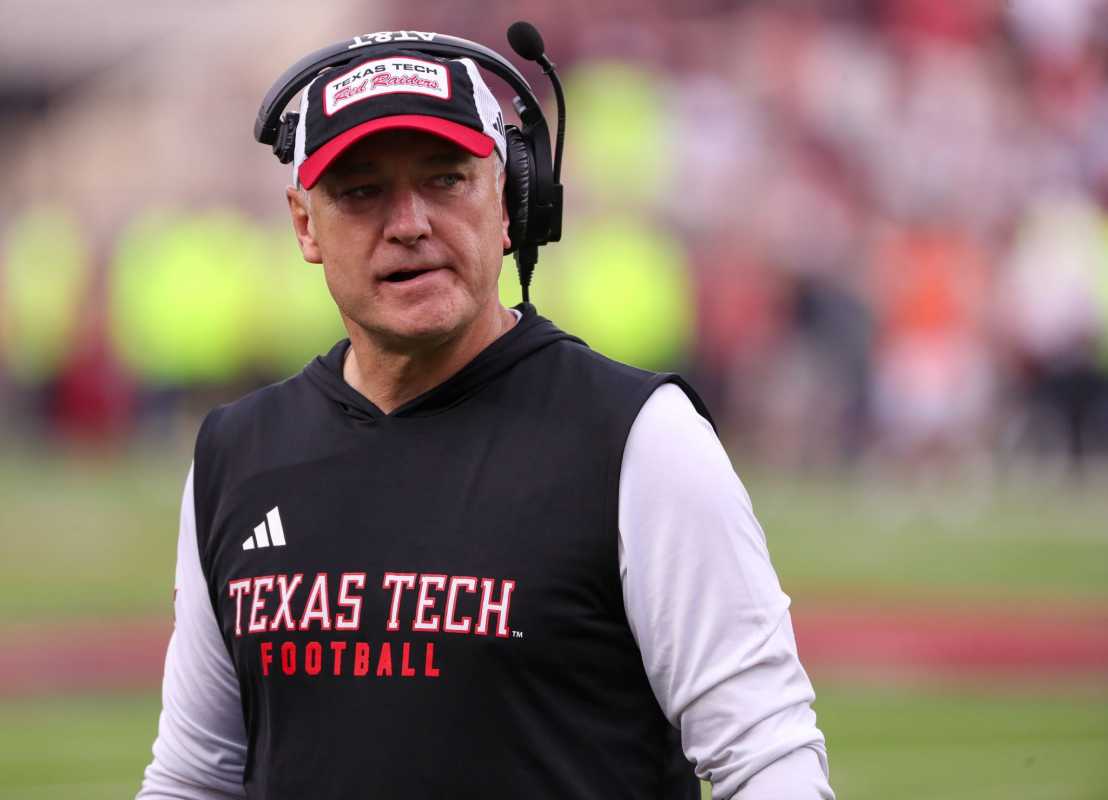
The Texas Tech Red Raiders defeated the BYU Cougars 34-7 in the Big 12 Championship Game. It secured them the No. 4 seed and a first-round bye in the College Football Playoff. They’ll play either the No. 12 seed James Madison Dukes or No. 5 seed Oregon Ducks in the Orange Bowl.
While Texas Tech strives for its first national championship in program history, it’s never too early to look into the future. The Red Raiders will face several major changes after the 2025 season, including from quarterback, Behren Morton. He’s using his final year of eligibility, while ESPN’s Matt Miller gives him a fifth-round grade in the 2026 NFL Draft.
Advertisement
The transfer portal doesn’t officially open until Jan. 2, but On3 reports that over 800 players are already set to enter. With Morton set to leave, Texas Tech could find his replacement in the portal.

Texas Tech Red Raiders head coach Joey McGuire.James Snook-Imagn Images
In an article, On3’s Pete Nakos, links the Red Raiders to Cincinnati Bearcats transfer quarterback Brendan Sorsby.
“Viewed as one of the most experienced quarterbacks in the transfer portal, Texas Tech is the school to watch early on for Brendan Sorsby,” Nakos wrote. “He’s also expected to evaluate the NFL draft, and Indiana and Tennessee are other schools to know.”
Advertisement
This season, Sorsby has completed 207 of 336 passes for 2,800 yards, 27 touchdowns, five interceptions and a 155.1 passer rating. He’s also rushed for 580 yards and nine touchdowns on 100 carries.
Sorsby is going to be highly sought after, with Rivals placing him as the third-ranked player in the transfer portal. His On3 NIL valuation of $2.4 million is tied for the 10th-highest in college football.
However, that may not be a problem for Texas Tech, which had the top-ranked transfer portal class in 2025. After bringing in 21 players, the Red Raiders had an adjusted NIL value of $7.6 million.
Advertisement
As the official transfer portal period approaches, Texas Tech’s quarterback situation will be one to watch. With Morton playing his final year of eligibility, the Red Raiders could already be exploring other options.
The Red Raiders will play in the Orange Bowl at noon ET Jan. 1 on ESPN and the ESPN app.
Related: Texas A&M QB Marcel Reed Shares NIL Update Before College Football Playoff
This story was originally published by Athlon Sports on Dec 18, 2025, where it first appeared in the College Football section. Add Athlon Sports as a Preferred Source by clicking here.
NIL
Anonymous coach names biggest fraud in the College Football Playoff
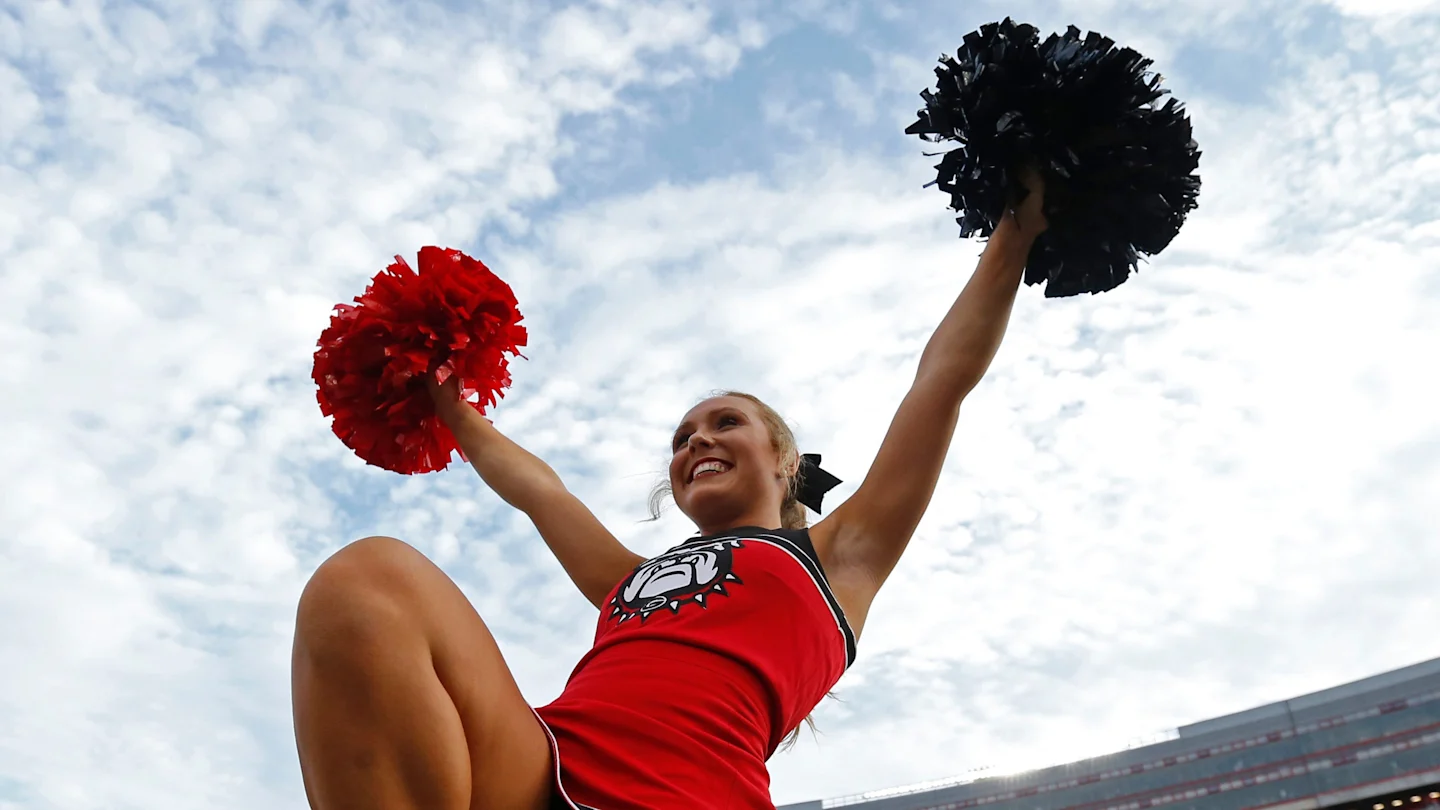
There’s always plenty of argument about who belongs and doesn’t belong in the College Football Playoff, and that was certainly the case this season, especially given the debates around that final spot coming between Notre Dame and Miami.
But looking over the 2025 bracket, it’s one of the most recognizable SEC programs that is getting the biggest criticism from those in the coaching business.
Asked to name the biggest fraud in this year’s College Football Playoff, it wasn’t one of the Group of Five teams that got the most attention, but none other than Ole Miss, which made the field on the back of a historic season.
Ole Miss, a fraud?
That’s according to one FBS coach, who doesn’t believe the Rebels have a good case.
“They’ve had so many distractions with Lane Kiffin leaving, and Oklahoma is probably their only good win this year,” an unnamed Group of Five head coach said of the Rebels heading into the College Football Playoff, according to The Athletic.
Whoever it was who said it, he apparently wasn’t alone. Far from it.
Taking a vote from more than two dozen anonymous coaches heading into the playoff, the publication found that to be, if not a consensus opinion, then something like it.
Ole Miss won out among the various playoff teams with 29 percent of respondents saying it was the most fraudulent team in the College Football Playoff this season.
A wild year for Ole Miss
Picking on the Rebels for not being playoff-worthy sounds counter-intuitive, given the unprecedentedly good season they’ve had on the field.
For the first time ever, Ole Miss completed an 11-win regular season and qualified for its first College Football Playoff berth.
Then came the drama. The head coach who brought them that success became the biggest name in what emerged as college football’s most hectic coaching carousel.
Lane Kiffin was named as the leading target for two other SEC programs and ultimately departed the Rebels for conference rival LSU after winning the Egg Bowl game.
Coach highlights Rebels’ schedule
The concern around Ole Miss’ perceived quality of schedule doesn’t seem like a concern at first glance.
It played three teams that made the College Football Playoff, beating both Oklahoma and Tulane, and losing a closely-fought matchup on the road against SEC champion Georgia.
Otherwise, the Rebels beat lesser SEC opponents like Kentucky, South Carolina, Florida, and Arkansas.
The win against then-No. 4 LSU doesn’t look as good as it did at the time, given the Tigers’ fall from grace that led to Brian Kelly’s ouster.
There was no universe in which an 11-1 Ole Miss was being left out of the College Football Playoff. Whether it truly belongs will be decided on the field, which can be said for any team in the bracket.
But the Rebels weren’t alone
Not far behind in the fraud poll were two surprising names. Big 12 champion Texas Tech and SEC runner-up Alabama were both decried as playoff frauds with 17 percent of the vote each.
Texas Tech being included is truly puzzling, given the quality of its defense, but those asked expressed concern for the offense, in particular quarterback Behren Morton.
In second place was “no answer,” as 21 percent of those asked didn’t provide any hints as to who they thought were frauds.
Group of Five selection James Madison received 8 percent of the vote as a perceived fraud, while Oregon and Oklahoma each got 4 percent.
Alabama not getting respect
One defensive coordinator from the SEC and a defensive assistant from the Big Ten took issue with the Crimson Tide being included among the dozen playoff teams this year.
“Alabama should have, like, five losses this year. They shouldn’t be there,” the SEC defensive coordinator said.
And the Big Ten coach added: “I’ve watched them. They’re not that good this year. I didn’t see enough from them to get this chance.”
(Athletic)
More college football from SI: Top 25 Rankings | Schedule | Teams
Follow College Football HQ: Bookmark | Rankings | Picks
NIL
P.J. Fleck reveals Gophers’ mindset and strategy in NIL contract negotiations

There are hundreds of conversations happening behind closed doors of college football programs across the country right now. Between player-contract negotiations, coaching staff turnover and transfer portal decisions, the sport has transformed into the wild west.
Minnesota has already seen 13 of its own players announce their intentions to enter the transfer portal when it officially opens next month. They’ve also had notable players such as Drake Lindsey, Jalen Smith and Maverick Baranowski reveal their plans to return next season.
“I don’t think anything in elementary education taught you how to negotiate contracts in college. Even as you look at the past of you being a head football coach, everything you’ve gained experience on — and then you get into this world of new college athletics — and unless you’re a head coach that backs away and says, ‘Hey, I am just gonna coach football.’ You have to be so in line with your chief of staff, your GM, director of player personnel… You have to talk more than you ever have, and have meetings more than you ever had,” P.J. Fleck said.
“I don’t think the general public actually truly knows what college football truly looks like.”
Really insightful stuff from P.J. Fleck today on how the Gophers re-negotiate contracts. Worth the listen. 👇
— Tony Liebert (@TonyLiebert) December 17, 2025
Subscribe: Sign up to receive the free Gophers On SI newsletter
Minnesota has seen notable players like Bucky Irving, Phillip Daniels, and Athan Kaliakmanis enter the transfer portal over the years, but it’s routinely among the best programs in the country at retaining players. For example, past and present Gophers stars Justin Walley, Tyler Nubin, and Darius Taylor have turned down more lucrative offers to stay at Minnesota.
“It’s just a new era of college athletics, and we’ve embraced it. I think Gerrit Chernoff and his staff do an amazing job. Our retention rate, as of right now, is really, really high. Everybody does it on their own time frame. That’s one thing I’ve learned,” Fleck said.
“Everybody has representation. Everybody has their own view of not necessarily what they’re worth, and what they want to be able to get out of that, and what they value, and you respect that.”
Many fans and traditionalists are frustrated by what college sports have become, but it’s the new reality. It’s essentially one-year contracts for every player on your team, and they’re able to re-negotiate every offseason, with no salary cap or clear market. Fleck has historically had boundaries with the amount of information he shares about the inner workings of his Gophers’ program, but he shared a legitimate inside look on Wednesday.
The Gophers are currently in the stage of the offseason where they’re re-recruiting the entire roster. We likely won’t know the details or specifics of the contracts, but it was interesting to hear Fleck peel back the curtain.
Gophers news, rumors and analysis
NIL
Tulane rides wave of economic impact into college football postseason
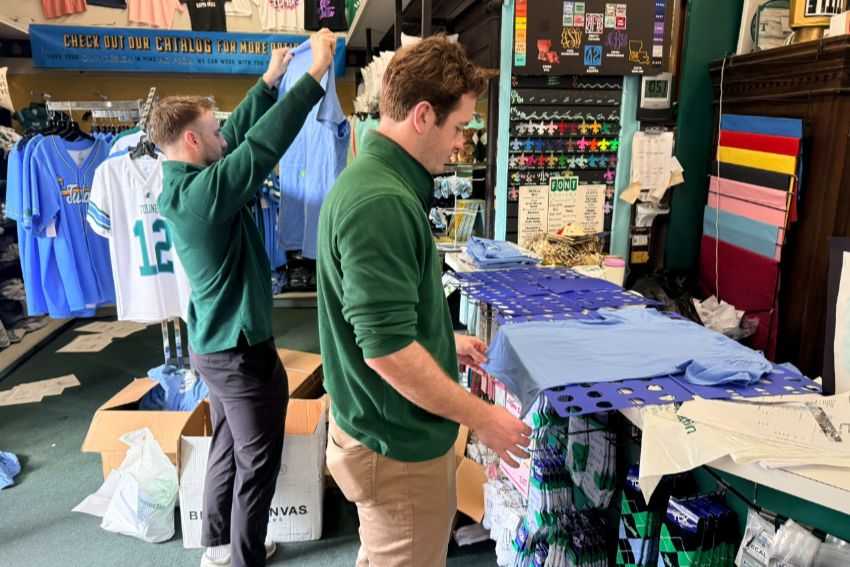
KEY TAKEAWAYS:
- Tulane’s playoff appearance is generating millions in donations, NIL funding and local business revenue
- Athletic donations jumped 373% year over year, totaling $1.68 million in just over a month
- NIL collectives raised more than $1.1 million following the conference championship
- Uptown retailers report record merchandise sales tied to Green Wave success
After being the first Louisiana university (sorry, LSU fans) to qualify for the college football playoffs, Tulane University, its athletic program, NIL organizations, and surrounding Uptown New Orleans businesses are seeing a multi-million dollar economic impact. From surging athletic donations to increasing merchandise sales, the Green Wave’s success on the field is translating into a massive green influx off of it.
“Since last week, we’ve taken in about 1,000 orders on the website, sold over 2,000 hoodies and 1,000 shirts, and a lot of the playoff merchandise,” said David Cariello, owner of the Campus Connection, an off-campus Tulane merchandise retailer on Broadway Street. Cariello has worked there since college and has owned Campus Connection since 2008. “This is unlike anything I have ever seen. Halfway through December, we are already at where we would be in a really good month, and by the end of the month, we may be at three times our typical monthly revenue.”
Cariello added that Campus Connection still has Tulane playoff merchandise available for fans interested in purchasing swag before Saturday’s game.
The American Conference champion Tulane Green Wave will travel to Ole Miss on Saturday to play in the first round of the college football playoffs. The game is scheduled for 2:30 p.m., and the winner will take on Georgia on Jan. 1, 2026, at the Caesars Superdome in New Orleans.

Ole Miss athletic officials are projecting a $74 million economic impact in Oxford for the playoff game, but, at home, in New Orleans, the institution and surrounding business community also are witnessing a financial windfall that administrators and shop owners describe as “unprecedented and magical.”
Tulane University Director of Athletics David Harris announced that between Nov. 12 and Dec. 16, the department received $1.68 million in donations from 519 donors. The figures represent a staggering 373 percent increase in dollar amount and an 83 percent rise in the number of donors compared to the same period last year.
Sam Scelfo, owner of the iconic Gambino’s Bakery in Metairie, has donated to Tulane University since 1973 and recalls his first donation of $100. For 52 years, Scelfo has consistently donated to the university and the athletics program.
“It’s magical what Tulane football has done this season. This college football playoff run is not just good for the university; it’s beneficial to the city as a whole, and it kind of mirrors the energy of New Orleans when the Saints are successful,” said Scelfo, who will attend Saturday’s game. “Even my LSU friends have called this past week to congratulate me. This season will breed success across the entire university – national recognition of the athletics program and university, more investment dollars, donations, applications – it’s just a win, win, win across the board.”
The financial impact extends into the modern frontier of college sports: Name, Image, and Likeness (NIL). Michael Arata, co-founder of the Fear The Wave Collective, reports the collective has raised over $1.1 million in NIL donations since the conference championship game. Arata can recall the early days of the Fear the Wave Collective in 2021 when he and co-founder Jimmy Ordeneaux set a goal of raising $10,000 in one year.

Fear The Wave fundraises to enhance accessibility for selected Tulane student-athletes to NIL deals, empowering them to gain financial and business exposure while maintaining their commitment to academics and sports.
“It’s such an unprecedented time for everyone involved in Tulane University and Tulane athletics. It’s been so busy but so much fun as well,” said Arata, who projects that Fear The Wave Collective will almost double its NIL fundraising amount in 2025 compared to 2024. “It would have taken us several months to raise the kind of money we just did in one week. We went from asking people to help maintain where we are to getting incoming calls of people wanting to do more to continue to support a program that has grown so much over recent years.”
Sumrall arrived at Tulane in 2024 and coached the team to a 9-5 record and an appearance in the Union Home Mortgage Gasparilla Bowl. This season, Tulane finished 11-2 and won the American Conference championship with a 34-21 win over North Texas in front of a sold-out Yulman Stadium.
Sumrall has announced that he will be the new head coach of the Florida Gators next season, but he has been allowed to coach Tulane through its playoff run. In the last week, Sumrall and his family announced a $100,000 contribution to the Green Wave Talent Fund, the university’s primary NIL fund and a Tulane athletics initiative to expand NIL opportunities for Tulane student-athletes across football, men’s and women’s basketball, and baseball.
“Jon’s donation shows the type of character he has, to help position Tulane for success after his departure. He is investing in the future of the program he helped build and in the lives of the kids he has changed,” Scelfo said. “His family’s donation definitely stimulated more donors to jump on board and also invest in the future of Tulane.”
For example, Arata said a Tulane family donated $500,000 to Fear The Wave Collective and then added $100,000 more after seeing Sumrall’s announcement. His donation also encouraged another donator to send a significant amount, and more donations have continued to come in since Tuesday’s news.
“We feel like we are just getting started, and this momentum over the last month can be self-sustaining and powerful going into the future,” Arata said. “We hope this sets the stage for building a program that is a permanent fixture on the national stage. Tulane was in the first Sugar Bowl, so why not play in the next one? Can you imagine the energy of the city and economic impact the Sugar Bowl will have if Tulane plays Georgia on New Year’s Day?”
NIL
JMU Coach Bob Chesney Doesn’t Hold Back On Dan Lanning And Dante Moore

The No. 5 Oregon Ducks (11-1, 8-1 Big Ten) and the Sun Belt Conference champions, No. 12 James Madison Dukes (12-1, 8-0 Sun Belt), are nearing their first-round matchup in the College Football Playoff in Eugene, Oregon, at Autzen Stadium.
Dukes coach Bob Chesney is going into unfamiliar territory, with their best win on the 2025 season coming against the Troy Trojans on Dec. 5 in the Sun Belt title game at home inside Bridgeforth Stadium in Harrisburg, Virginia, 31-14. Their lone loss at the Atlantic Coast Conference’s Louisville Cardinals near the start of the season on Sept. 5, 28-14.

Bob Chesney Doesn’t Hold Back On Dan Lanning And Dante Moore
Regarding redshirt sophomore quarterback Dante Moore, Chesney knows he’s the most dangerous player on the field for the Ducks, due to his ability to impact the offensive game in any facet under center. He touched on the leader when speaking to the media before the Saturday, Dec. 20, matchup.
“To me, it’s the willingness of the quarterback to throw into coverage. He understands tight windows and trusts his arm. He could be one of the top draft picks in this draft. There’s a lot in there. He has confidence and trust. He’s mobile. He does a really good job of getting the ball out,” Chesney stated.
When Chesney touched on matching up with Oregon coach Dan Lanning, the future UCLA Bruins head coach spoke on Lanning’s success in taking over a new program back in 2022 and making it his own, to what the college football world sees today.

“They’re extremely well coached. They are just really good at understanding protections and trying to break those protections. When they get to their one-on-one matchups or if they get on a running back, they do a really good job of keeping their pad level down.”
Chesney continued, “They do not quit as they are pursuing the quarterback. A lot of the big plays that have happened against them have been quarterbacks being able to evade some sort of rush and get their feet set and find something downfield.”
MORE: Oregon Ducks Face Escalating Flood Risk as Playoff Game Approaches
MORE: Bo Nix and Justin Herbert Push Toward NFL Playoffs as Former Ducks Thrive
MORE: JMU Quarterback Doesn’t Hold Back On Oregon, Flashy Uniforms, Autzen Stadium
SIGN UP FOR OUR NEWSLETTER HERE!
Preparing for Autzen Stadium Atmosphere
In front of a sold-out crowd of 54,000+ in Eugene on Saturday, Chesney understands that the loud atmosphere will play a major factor for his units on both sides of the ball when trying to hear play-calling from the James Madison sideline.
That’s without the full Ducks’ student body present, being on Christmas break.
“We want to try and make it to where we can’t even hear each other on both sides of the ball, knowing that it will affect the offense and the special teams more than it will the defense, but that is definitely what we’re jumping into,” Chesney said. “We have all their songs, all the things they do, their band, everything we could gather is what we’re putting on display out there for our guys, so that’s something that they’ve heard before.”

Oregon vs. James Madison NIL Disparity
Chesney pointed out that James Madison’s Name, Image, and Likeness or NIL for the 2025 season was around $1 million. As for Oregon’s football program and NIL, it’s considered to be the top in the sport. This is due to the university’s long-time partnership with Nike and co-founder Phil Knight.
In fact, the Dukes and Ducks are so far from each other financially that Oregon’s defensive coordinator, Tosh Lupoi (earned $2 million in 2025), makes more than James Madison’s head coach and his 2025 roster combined. Chesney was owed a $833,495 salary for the 2025 season.
-

 Motorsports1 week ago
Motorsports1 week agoSoundGear Named Entitlement Sponsor of Spears CARS Tour Southwest Opener
-
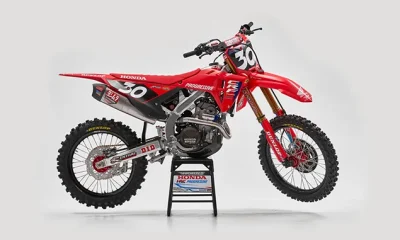
 Motorsports3 weeks ago
Motorsports3 weeks agoJo Shimoda Undergoes Back Surgery
-

 NIL3 weeks ago
NIL3 weeks agoBowl Projections: ESPN predicts 12-team College Football Playoff bracket, full bowl slate after Week 14
-

 Rec Sports3 weeks ago
Rec Sports3 weeks agoHow this startup (and a KC sports icon) turned young players into card-carrying legends overnight
-
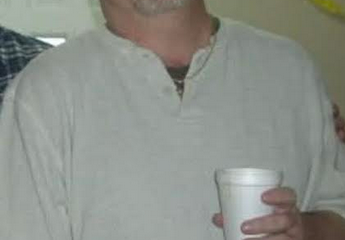
 Rec Sports3 weeks ago
Rec Sports3 weeks agoRobert “Bobby” Lewis Hardin, 56
-
Sports3 weeks ago
Wisconsin volleyball sweeps Minnesota with ease in ranked rivalry win
-

 Motorsports1 week ago
Motorsports1 week agoDonny Schatz finds new home for 2026, inks full-time deal with CJB Motorsports – InForum
-

 Motorsports3 weeks ago
Motorsports3 weeks agoIncreased Purses, 19 Different Tracks Highlight 2026 Great Lakes Super Sprints Schedule – Speedway Digest
-

 Rec Sports2 weeks ago
Rec Sports2 weeks agoHow Donald Trump became FIFA’s ‘soccer president’ long before World Cup draw
-
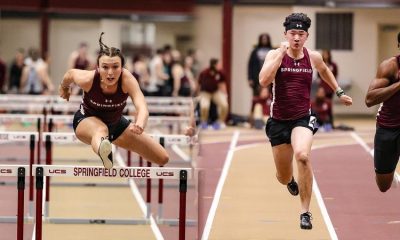
 Sports2 weeks ago
Sports2 weeks agoMen’s and Women’s Track and Field Release 2026 Indoor Schedule with Opener Slated for December 6 at Home































